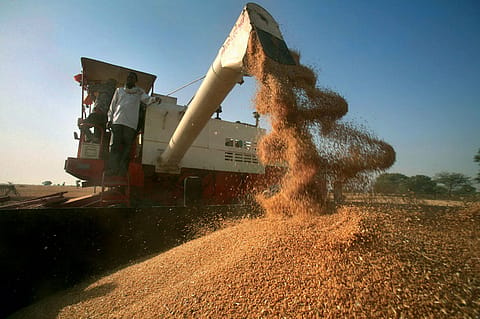Agriculture and sustainability: A shared path to a resilient future
Natural farming emerges as key to climate-smart agriculture as COP29 boosts global support

Agriculture, responsible for nearly 20% of global greenhouse gas emissions, is paradoxically one of the most vulnerable sectors to climate impacts. To meet global climate goals, it’s imperative to transform agriculture into a system that is not only climate-smart but also resilient and inclusive. In this context, natural farming emerges as a promising solution, tackling these challenges while laying the groundwork for a sustainable and equitable future for farmers. In an optimistic turn of events, funding is no longer one of the biggest hurdles for natural farming. COP29 turned the tide with initiatives like the Loss and Damage Fund, channeling global commitments toward sustainable agriculture. Now that the necessary groundwork has been done, it is time for action -- scaling and implementing solutions to make agriculture truly climate-smart and resilient.
COP29 rightly highlighted Climate-Smart Agriculture (CSA) as a transformative approach to addressing these issues. Built on three pillars - sustainability, adaptation, and mitigation -- which CSA provides the framework, natural farming operationalises these principles. In India, where smallholder farmers constitute 85% of the farming community , natural farming acts as a sustainable alternative to chemical-intensive agriculture. This is primarily because it restores soil health, ensures biodiversity and brings balance to the ecosystem.
Our experience in Latur, one of Maharashtra’s most drought-prone districts, highlights the transformative potential of natural farming. In a study conducted by Vikas Anvesh Foundation focused on farmers supported by Adarsh Mahila Griha Udyog (AMGU), we found that farmers transitioning to natural practices reported net incomes that were more than double those of farmer who did chemical farming, despite mixed yield results. The cost of cultivation for natural farming was significantly lower, about one-third of conventional methods, reducing financial risk and enhancing resilience in a region with unreliable monsoons. While kharif yields were slightly lower, the higher quality of natural produce ensured better price realisation, matching the total receipts of chemical farms. Moreover, self-consumption of farm produce increased, improving household nutrition. These findings suggest that natural farming not only enhances livelihoods for small and marginal farmers but also offers a pathway to sustainable, low-risk agriculture. Scaling these practices could significantly improve life for farmers in ecologically vulnerable regions like Latur.
Despite these promising results, challenges persist. Many farmers remain skeptical of the limited scientific validation of natural farming practices, weak market linkages, and insufficient incentives. The goal is clear: to make natural farming not just an ecological necessity but also an economically viable choice for farmers. Scaling natural farming requires models that demonstrate both impact and replicability, and several initiatives across the country offer just that. With existing models serving as a blueprint, the path is clear: collaborative, systemic efforts can make natural farming the norm, driving sustainability and equity for India’s farmers.
To truly align agriculture with climate-smart practices, a multi-faceted approach is essential. Governments need to incentivise sustainable farming through subsidies, carbon credits, and research funding. Technological innovations, such as precision farming tools and remote sensing, must be harnessed to enhance efficiency. And collaborative models, particularly public-private partnerships, can provide the financial and technical support needed to scale these efforts effectively. The recent launch of the National Mission on Natural Farming by the Government of India is a welcome step, aiming to equip farmers with the knowledge, resources, and techniques to transition toward sustainable practices. By fostering integrated cropping systems and reducing dependence on chemicals, the mission addresses critical challenges like climate shocks and resource depletion.
Agriculture stands at the crossroads of opportunity and urgency, and the time to act is now. Natural farming offers a rare convergence of ecological restoration, farmer resilience, and global climate action. With models across the country showing the way and government initiatives building momentum, the opportunity to mainstream natural farming has never been greater. COP29 underscored the urgency of systemic transformation, and now is the time to act - not just for progress, but for survival.
(Gayatri Nair Lobo is CEO, and Anubha Sah is Chief of Staff at A.T.E. Chandra Foundation. The views expressed are personal.)